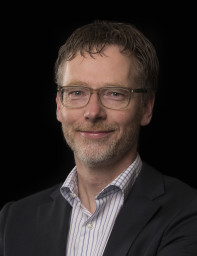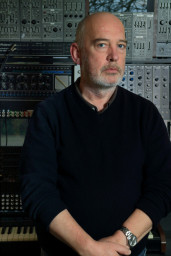© 2025 SURF
Paper presented at the 41st World Conference of the International Council for Traditional Music ICTM, St John's, Newfoundland, Canada, 14/7/2011.

In this report I am happy to share some of the developments concerningethnomusicology and related disciplines in the Netherlands over the past two years.

Report on the current state of affairs on ethnomusicology in the Netherlands for international association ICTM

This study focuses on the uses and functions of music in the life of individuals in the province of Groningen at the beginning of the twenty-first century. The study is an ethnomusicological study representing the sub-discipline of ethnomusicology-at-home. It uses Andreas Reckwitz’ formulation of practice theory as a theoretical starting point and introduces methodological principles from the field of qualitative sociology. Central in the study is the individual. 30 theoretically sampled individuals recounted their musical biographies in narrative-biographical interviews, which were analyzed in detail and eventually led to a sufficiently suggested grounded theory of the uses and functions of music in Groningen AD 2010. The theory consists o three interrelated compartments. The first compartment contains a description o the uses o music a expressed b the interviewees. ‘Use’ refers t the ‘customary exercise o music’ i concrete musical social situations. The result o this study i of this study. The study describes how three cultural codes seem to be shared amongst many (though not all) of the interviewees: the codes of playing an instrument, craftsmanship, and musicality, together forming the supercode of the music specialist. These three more general codes are combined with two further codes to form the highly specific and culturally hegemonic musical subject culture of art music, expressing that music is a specialism; it is the craft of playing an instrument by talented individuals; that this craftsmanship must be combined with expressivity; and that through this form of specialized expression musical objects come into being which represent the ideal realm of the artistic. By discussing this attempt at a grounded theory of the uses and functions of music in Groningen AD 2010, a picture is delivered of how individuals become musical individuals. Through their musicking in the context of concrete musical social situations they use music for the functions of affirmation, connection and regulation of the self; and they do this in the context of a web of cultural codes labeling shared and disputed – and sometimes hegemonic – ways of doing and talking. An evaluation of the theory and methodology used in this study shows that both assist in further developing the field of ethnomusicology(-at-home); an evaluation of the results in the light of existing research shows that they contribute to further insights into the uses and functions of music. Four areas for further research are mentioned: typologizing the uses and functions of music, musical discourses, musical subject cultures, and the place of the musical subject order of art music in contemporary society. The study ends with a description of the possible implications for conservatoires. Conservatoires are recommended to encourage students to think of their future audiences in the broadest possible terms, taking into account the wide variety of uses and functions of music figuring in the daily lives of musicking individuals. They are encouraged to make students look upon themselves (also) as service providers, and as such to be open and non-judgmental in their relationships towards the musical other. Conservatoires are recommended to translate this into their curricula by devising transformative projects in which students meet ‘musical others’, and by encouraging their students to take their possible audiences into account consciously in any musical social situation they devise or find themselves in.

Paper presented at the 31st European Seminar in Ethnomusicology ESEM, Limerick (Ireland), 18/9/2015. This paper presents a case study of ‘Belinda’, a Dutch woman in her early sixties who considers herself at the same time as ‘un-musical’ and musically hyper-sensitive. She is neither an ‘outstanding performer’ nor a ‘maverick’, but rather an idiosyncratic example of late-modern (i.c. Dutch) everyday life musicality.Interesting as her particular case may be, the focus in this paper is theoretical and methodological. Through concisely discussing Belinda’s biography, I will be able to focus, theoretically, on using practice theory as formulated recently by German cultural sociologist Andreas Reckwitz as a possible foundation for studying music in late-modern western societies. Reckwitz considers culture as an inherently hybrid and dynamic arena of shared and contested individual understandings of the world, and sees practices – ‘ways of doing and saying’ – as the locus of culture. Methodologically, I posit – referring to Reckwitz but also to the seminal work of George Herbert Mead and others - that there is no need to think about the individual and the social as two mutually exclusive domains, but rather that the individual is inherently social and therefore the study of music in society (‘music as culture’; or maybe ‘ethnomusicology’) should base itself on a thorough micro-ethnographic study of individuals, rather than on more abstract groups, combining ethnographic methods with insights from qualitative sociology and Grounded Theory.The paper hopes to contribute to theoretical and methodological discussions in ethnomusicology. Because the study of ‘Belinda’ is a strong example of a study by a researcher who has been born and bred in the same context of ‘shared and contested ways of doing and saying’ as the researched, the paper also hopes to contribute to ideas about the methodological particularities of ‘ethnomusicology-at-home’ and about the potential value of ethnomusicological studies of late-modern musicality and musical late-modernity.
Paper presented at the 43rd ICTM World Conference, 16-22 July 2015, Astana, Kazakhstan. The paper discusses some aspects of the shanty choir phenomenon in the Netherlands and contains a methodological discussion concerning ethnomusicology-at-home, 'neo-classical fieldwork' and the place of participant observation in ethnography.
This essay is published for the occasion of the inauguration of Evert Bisschop Boele on June 25, 2014 as professor ‘New Audiences’ of the research group Lifelong Learning in Music, Centre of Applied Research and Innovation Art & Society/Prince Claus Conservatoire, Hanze University of Applied Sciences Groningen.

Sinds de invoering in 1998 van de Tweede Fase in het Middelbaar Onderwijs is er een nieuw elan geslopen in discussies die gaan over wat interdisciplinariteit in de kunsten precies betekent en hoe deze van betekenis kan zijn voor het kunstonderwijs. Tot het moment van invoering werd het kunstonderwijs op de middelbare school op een monodisciplinaire wijze vorm gegeven, maar met de invoering kwam het fenomeen interdisciplinariteit veel directer in de schijnwerpers van het onderwijs te staan. De vakken CKV 1 – 3 (Culturele en Kunstzinnige Vorming) hadden veel nadrukkelijker een gemeenschappelijke benadering van de kunsten als vertrekpunt en die benadering richtte zich heel direct op gemeenschappelijke kenmerken van de kunstdisciplines.




